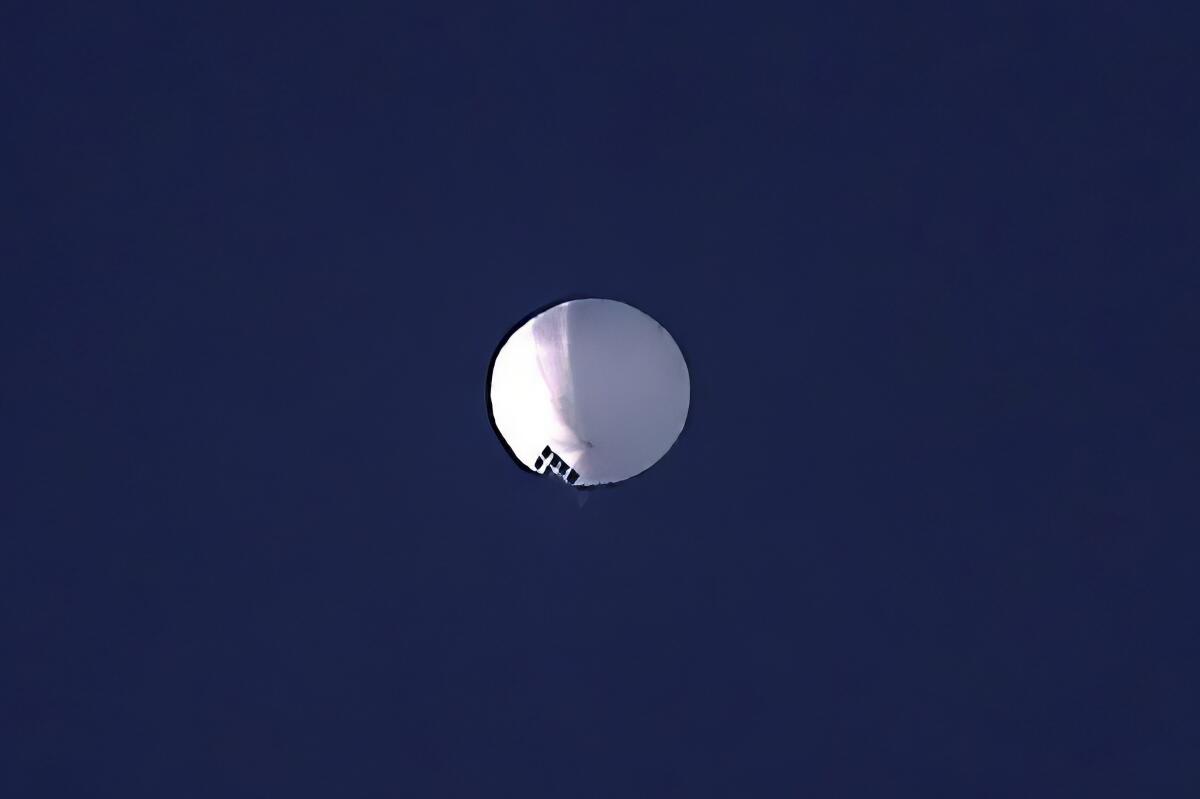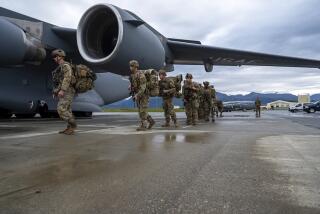China’s conducted spy balloon program for years, Pentagon says

- Share via
WASHINGTON — The Chinese balloon shot down off the South Carolina coast was part of a large surveillance program that China has been conducting for “several years,” the Pentagon said Wednesday.
When similar balloons passed over U.S. territory on four occasions during the Trump and Biden administrations, the U.S. did not immediately identify them as Chinese surveillance balloons, said Brig. Gen. Pat Ryder, the Pentagon press secretary. But he said “subsequent intelligence analysis” allowed the U.S. to confirm they were part of a Chinese spying effort and learn “a lot more” about the program.
The Navy is carrying out an extensive operation to gather all of the pieces of the massive Chinese spy balloon a U.S. fighter jet shot down off the coast of South Carolina on Saturday.
He refused to provide any new details about those previous balloons. When pressed, Ryder would say only that the balloons flew over “sites that would be of interest to the Chinese.”
One of the possible incidents was last February.
Maj. Gen. Kenneth Hara, the adjutant general in Hawaii, tweeted about a balloon over Kauai a year ago. He said U.S. Indo-Pacific Command “detected a high-altitude object floating in air in the vicinity of the Hawaiian Islands” and sent up aircraft to intercept it. He said they visually confirmed it was an unmanned balloon with no identification markings.
Ryder declined to say whether this was one of the four previous incidents that he had mentioned. Pacific Air Forces, the Air Force command in the Indo-Pacific, said that balloon was not shot down.
The recent balloon was shot down by a U.S. military fighter jet Saturday. The Navy and Coast Guard are working to recover pieces of the balloon so they can be analyzed.
China says it was a civilian balloon used for meteorological research and sharply criticized the U.S. for shooting it down.
In response to questions about China’s explanation, Ryder said Wednesday: “I can assure you this was not for civilian purposes. ... We are 100% clear about that.”
Ryder said North American Aerospace Defense Command began tracking the balloon as it approached U.S. airspace. It passed north of the Aleutian Islands on Jan. 28 and moved largely over land across Alaska and then into Canadian airspace before crossing back into the U.S. over northern Idaho on Jan. 31, U.S. officials have said.
Top administration officials were briefing members of Congress on the Chinese balloon surveillance program in classified sessions Wednesday and Thursday. Avril Haines, director of national intelligence; Deputy Secretary of State Wendy Sherman; Gen. Glen VanHerck, head of U.S. Northern Command; and Colin Kahl, the undersecretary of Defense for policy, were among those expected to brief lawmakers.
Secretary of State Antony J. Blinken said the U.S. has briefed dozens of countries on the program, which officials said has been active over five continents.
“The United States was not the only target,” he said at a news conference with visiting NATO chief Jens Stoltenberg. Blinken said he and Stoltenberg had spoken about the “systemic and tactical challenges” that China poses to the alliance and the importance of combating them.
Stoltenberg agreed on the nature of the Chinese threat, saying the balloon incident “confirms a pattern of Chinese behavior” and noting that Beijing had “invested heavily in new military capabilities, including different types of surveillance and intelligence platforms.”
“We have also seen increased Chinese intelligence activities in Europe,” he said. “We just have to be vigilant. We need to be aware of the constant risk of Chinese intelligence and step up what we do to protect ourselves.”
Those briefings were continuing Wednesday, and the State Department has sent a cable to all U.S. embassies and consulates outlining the administration’s case against China and instructing American diplomats to discuss these points with their host governments. However, the cable is less specific than what has been briefed to allies and partners.
Off the South Carolina coast, meanwhile, Navy divers began pulling pieces of the Chinese balloon from the depths of the ocean floor Tuesday, using sophisticated reconnaissance drones dubbed the Kingfish and the Swordfish to find the debris.
Ryder said agents from the FBI and the Naval Criminal Investigative Service are cataloging the debris and transporting it for further processing.
More to Read
Sign up for Essential California
The most important California stories and recommendations in your inbox every morning.
You may occasionally receive promotional content from the Los Angeles Times.














